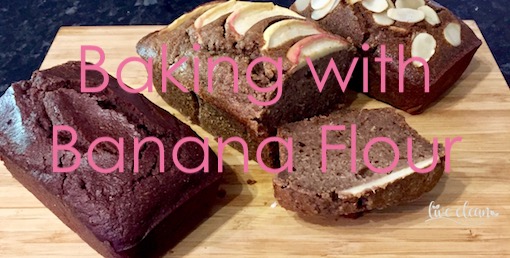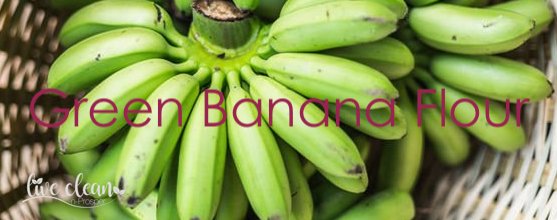Todays post is about baking with banana flour.
After doing the research on banana flour last week, I thought I would find and trial an easy recipe. It appears that you can substitute banana flour directly for wheat flour in your baking. The flour has a texture similar to lighter wheat flours and requires about 25% less volume.
The flour has similar baking characteristics to wheat flour, but is 100% gluten free, which makes it a perfect choice for coeliacs, people with gluten intolerance or those trying to avoid wheat. It’s readily available in the health food section of the supermarket.
Due to the high resistant starch content of the flour, you tend to eat less of whatever you cook with it, as a small amount tends to be filling.
I baked 3 different cakes with the banana flour to determine which recipe to share with you. I chose the chocolate cake one as it has the least ingredients and is usually the most popular.
Banana Flour Chocolate Cake
Ingredients
1 cup Green Banana Flour
2 teaspoons baking powder
3 tablespoons of cacao powder
½ cup maple syrup (or rice malt)
140 grams melted butter (or oil of your choice)
½ cup of milk (type of your choice)
½ cup water
2 eggs
Method
- Preheat oven to 180’ C and prepare your baking tin (I used a 20cm loaf tin)
- In a large mixing bowl combine flour, baking powder and cacao
- Add melted butter, syrup, milk, water and eggs mixing well.
- Pour batter into tin and bake for 35 to 40 minutes until a skewer inserted into the cake comes out clean (or slightly tacky for a moister cake).
- Allow to cool completely before removing from tin.
** On my first attempt the cake was a little dry so for the second one I followed this tip I found. Very happy with the result.
Cooking Tip – Cook the cake for ½ of the time uncovered as usual and then cover with foil for the remaining time.
I hope you enjoy your baking experience.
Till the next post,
Live clean n Prosper


